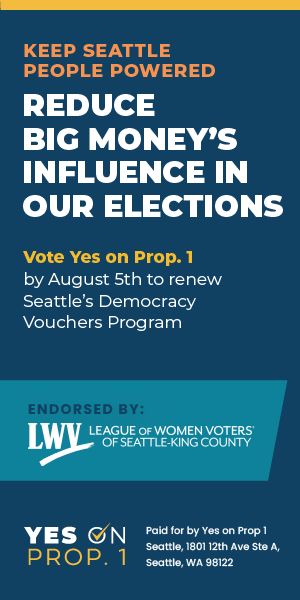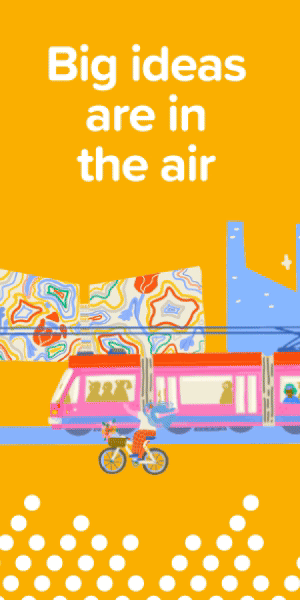Tacoma Link is set for a significant expansion thanks to final approval by the Sound Transit Board of Directors. At a meeting yesterday, the Board voted on a resolution to confirm final routing, station location, and expansion of the existing operations and maintenance facility. Tacoma Link will be extended by 2.4 miles from its northern terminus at the Theater District to serve six new stations in Stadium District and Hilltop Neighborhood. This expansion means that Tacoma Link will more than double in length from 1.6 miles to 4 miles in total and number 12 stations. On top of that, service will be mostly improved with trains coming every 10 minutes (instead of every 12 minutes) during most hours, and off-peak service will be improved to every 20 minutes (instead of every 24 minutes).
The Board approved a U-shaped alignment that had been hotly contested throughout the earlier planning process. Built entirely at-grade, the alignment will be located within city streets using double track for most of its length. From the Theater District terminus on Commercial Street, the extended alignment will continue onto Stadium Way until it reaches North 1st Street where the street jogs up the hill. Continuing along N 1st St, the alignment will proceed toward Martin Luther King Jr. Way by way of Division Ave. The extended alignment will ultimately end at S 19th St on Martin Luther King Jr. Way.
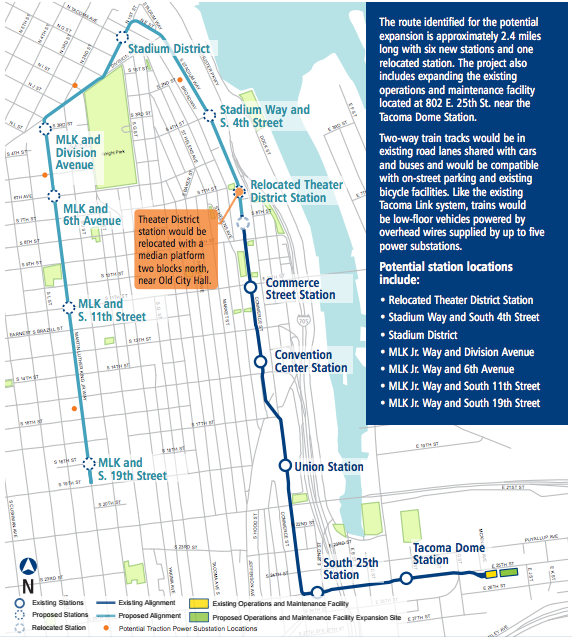
New stations will be located at:
- Stadium Way and S 4th St;
- Stadium District (N 1st St and N Tacoma Ave);
- MLK Way and Division Ave;
- MLK Way and 6th Ave;
- MLK Way and S 11th St; and
- MLK Way and S 19th St.
The Theater District Station will be relocated in front of Old City Hall, a block south away from the current station. The expansion also includes a larger operations and maintenance facility just east of the existing one near Tacoma Dome Station. Sound Transit plans to retain one-car trains even during the peak as demand is not anticipated to require additional cars.
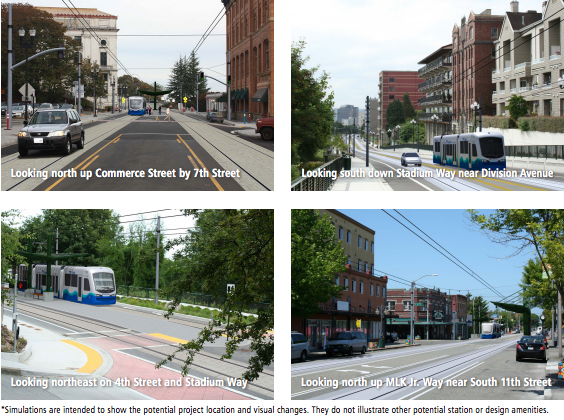
Sound Transit is estimating that ridership will grow from 3,000 daily riders today to 10,800 daily riders by 2035, a 360% increase. Four stations will crack 1,000+ daily boardings, with two of those along the extension: MLK Way/S 19th St (1,500 daily boardings) and MLK/Division Ave (1,300 daily boardings). Both of those stops will be in close proximity to major hospitals, which are typically high transit ridership generators. Tacoma Dome Station will still remain king with 2,300 daily boardings thanks to its status a major regional transit hub and Sounder. But the extension will also be notable for having the lowest ridership station at Stadium/S 4th St (100 daily boardings), presumably due to being hemmed in by a freeway on one side and a steep hill on the other.
Tacoma Link 2035 Ridership
| Stop | Ridership |
|---|---|
| Tacoma Dome | 2,300 |
| S 25th St | 200 |
| Union Station | 900 |
| Convention Center | 1,300 |
| Commercial Street | 300 |
| Theater District | 800 |
| Stadium and 4th St | 100 |
| Stadium District | 800 |
| MLK/Division Ave | 1,300 |
| MLK/6th Ave | 500 |
| MLK/S 11th St | 800 |
| MLK/S 19th St | 1,500 |
| Total | 10,800 |
Trip time along the extension itself will be around 14 minutes, and end to end of the line will be about 22 minutes. That would suggest an average speed of 17 miles per hour on the extension and 18 miles per hour along the whole line.
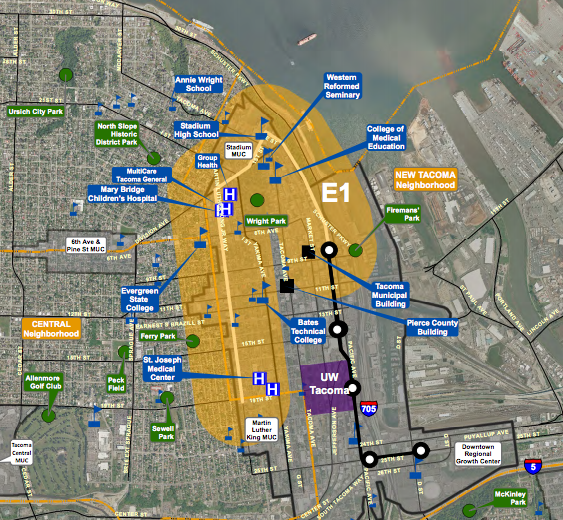
To many transit purists, the alignment itself may seem somewhat mangled with its U-shape. And indeed, the short north-south alignment and low frequency may pose a serious impediment to attracting cross-town riders to transfer to the line. However, a combination of local geography, population and employment distributions, and potential for substantial infill development along the line mean that it may be a sensible approach. The extension means that 54,000 jobs and 47,000 residents will be within reach of Tacoma Link by 2035. And with 10,800 daily riders on that line alone, it will still draw in a large share of local riders, commuters, and visitors.
The project isn’t a slam-dunk yet. The total project is expected to cost $165 million, but not all funds have been secured. Sound Transit 2 funding will cover $50 million, but that still leaves $125 million needed to complete the project. That has led the to Sound Transit to partner with the City of Tacoma and apply for grants to cover part of the costs. So far, the City of Tacoma has hobbled together $33 million in federal and state grants, with the most recent one coming from a $15 million TIGER grant by the United States Department of Transportation. Tacoma must identify another $7 million to meet its $40 million pledge toward the project. Earlier this year, Sound Transit won a $75 million Smart Starts grant from the Federal Transit Administration as part of that agency’s 2016 budget proposal. Sound Transit hopes to have all funding in place by 2018 to begin construction of the project. In the meantime, the agency will begin detailed engineering and civil planning of the extension.
Stephen is a professional urban planner in Puget Sound with a passion for sustainable, livable, and diverse cities. He is especially interested in how policies, regulations, and programs can promote positive outcomes for communities. With stints in great cities like Bellingham and Cork, Stephen currently lives in Seattle. He primarily covers land use and transportation issues and has been with The Urbanist since 2014.




